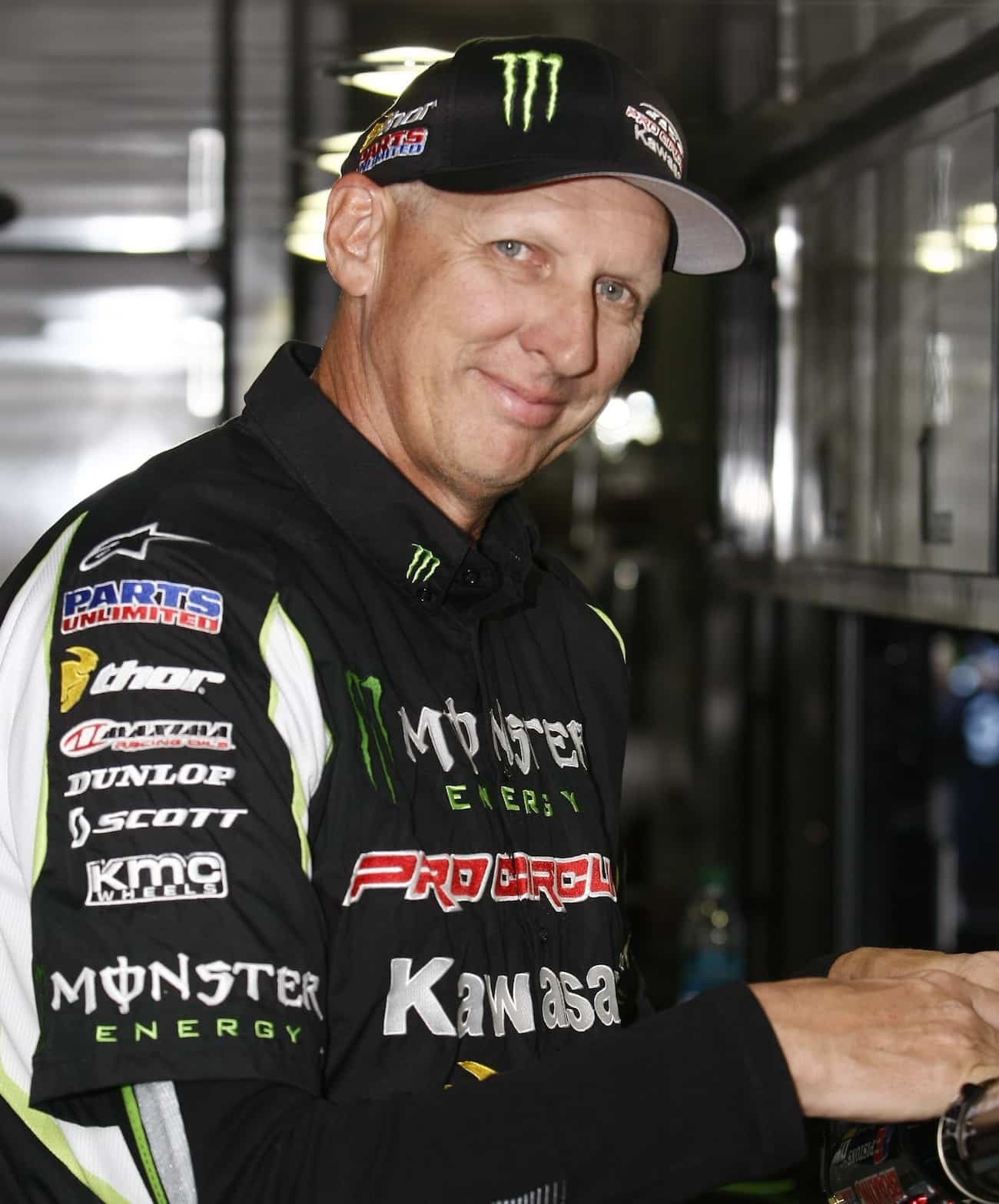BARE BONES: THE BASICS OF BIKE BALANCE
By Bones Bacon
You’re charging hard down a straightway and coming up to a corner. Your bike feels like a Harley, all choppered out, and the forks are harsh and deflecting off every bump. When you shut off the gas and get on the brakes to enter the corner, everything calms down for a brief moment. Then, as you sweep through the apex and turn the throttle on, you are going along for the ride as your bike starts pushing off the track instead of turning. Before you know it, you are in the water-truck lane trying to gather it back up. What happened?
“BALANCE IS A VERY IMPORTANT FACTOR IN HOW YOUR BIKES FEELS, HANDLES AND CORNERS.”
The answer? The real problem is that your bike’s balance is out of whack. The balance of the bike is a very important factor in how it feels, handles and corners. If the balance is off, then it’s time to think your way through the problem one step at a time. The problem could have to do with the basic fundamentals of suspension. The sag could be too low in the rear or the fork height too tall in the front. Or, it could be a combination of both. What makes it confusing is that if your shock spring rate is too soft, fork springs (air pressure) too stiff or both of them off by a smidgen, the results will be the same.
To solve this puzzle, try this exercise. Pretend that you don’t have any clickers on your bike. Go back to the basics and check your sag. Measure the static (free) sag to determine if you have the proper shock spring on your bike. Too much static sag (very little spring preload) and you may need a softer spring. Too little static sag (a lot of spring preload) and you may need a stiffer spring. Once you’ve taken care of the rear of the bike, turn your attention to the front. If the front feels high, stiff and deflective, try lowering your spring rate (or air pressure).
If it feels like a small problem, maybe just adjust your fork height by sliding the forks up a couple of millimeters.
Once you’ve gotten these basics out of the way, you need to get down to the nitty-gritty of fine-tuning the feel. It’s time to look at the compression and rebound clickers. Normally, I would recommend changing one clicker at a time so that you don’t get lost, but if you are at the races and need a solution in a hurry, then a combination adjustment may be the best way to go.

To accomplish this, think through your problems carefully and ask yourself these questions: Does my bike feel low in the back and high in the front? Is this just a result of the shock sinking in under acceleration? Does the shock feel like it stays down after sinking under acceleration? If you answered yes to any of these questions, you may need to add a couple clicks of low-speed compression to keep the shock from sinking so much and a little less rebound damping so it doesn’t hold itself there.
The next scenario requires a new set of questions: Do your forks feel like they are always up in the stroke when the throttle is on and the front is light? Do the forks stay up under deceleration and hard braking? At the apex of a corner, do the forks lift quickly and go back to feeling high? This could mean you need less compression damping so the fork can feel softer, ride lower and settle more under braking. You might also add a little more rebound damping to keep the front end planted so it doesn’t lift up so much.
Finding the perfect balance is more complex than just fork and shock settings, but you have to get the basics (sag, spring rates, fork height and clicker settings) taken care of before you start messing with anything else. These basics are essential aspects of a well-balanced bike, which is the number one thing that will keep you feeling comfortable and out of the water-truck lane.






Comments are closed.